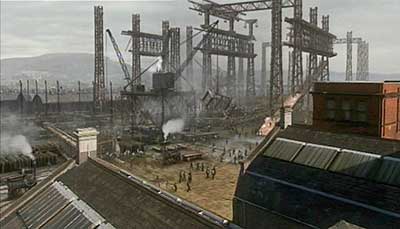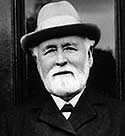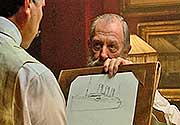HARLAND & WOLFF

There had been a shipbuilding industry in Belfast since 1790 but it really took off during the 19th century when Belfast became Ireland’s industrial heartland. The Harbour Commissioners had the Victoria Channel excavated, allowing bigger ships to dock, and used the slob land to build Queen’s Island. This provided shipbuilders with ample space to develop their yards and made excavating large dry docks relatively easy and inexpensive.
Edward James Harland joined Queen’s Island shipbuilders, Robert Hickson & Company, in 1954 as the shipyard’s General Manager. He was only 23. His father was a doctor and part-time engineer and his interests had rubbed off
on Edward.
 Four years after joining Robert Hickson he brought the company from his boss for £5,000. His personal assistant at the time was Gustav Wilhelm Wolff, a young German with a background in engineering. Wolff was the nephew of the man who had helped Harland finance the purchase of the company. Wolff was taken on as a partner in the company in 1861 and in 1862 the company started trading as Harland & Wolff. Harland & Wolff built all their ships on a cost plus basis – their usual terms were cost plus four per cent. By the time the Titanic was commissioned in 1907, Harland & Wolff was run by Lord William Pirrie, a hard-nosed Ulsterman. He ruled his shipyard with an iron will – every minute of every working day was his and his word was final. He would not be overruled.
Four years after joining Robert Hickson he brought the company from his boss for £5,000. His personal assistant at the time was Gustav Wilhelm Wolff, a young German with a background in engineering. Wolff was the nephew of the man who had helped Harland finance the purchase of the company. Wolff was taken on as a partner in the company in 1861 and in 1862 the company started trading as Harland & Wolff. Harland & Wolff built all their ships on a cost plus basis – their usual terms were cost plus four per cent. By the time the Titanic was commissioned in 1907, Harland & Wolff was run by Lord William Pirrie, a hard-nosed Ulsterman. He ruled his shipyard with an iron will – every minute of every working day was his and his word was final. He would not be overruled.

